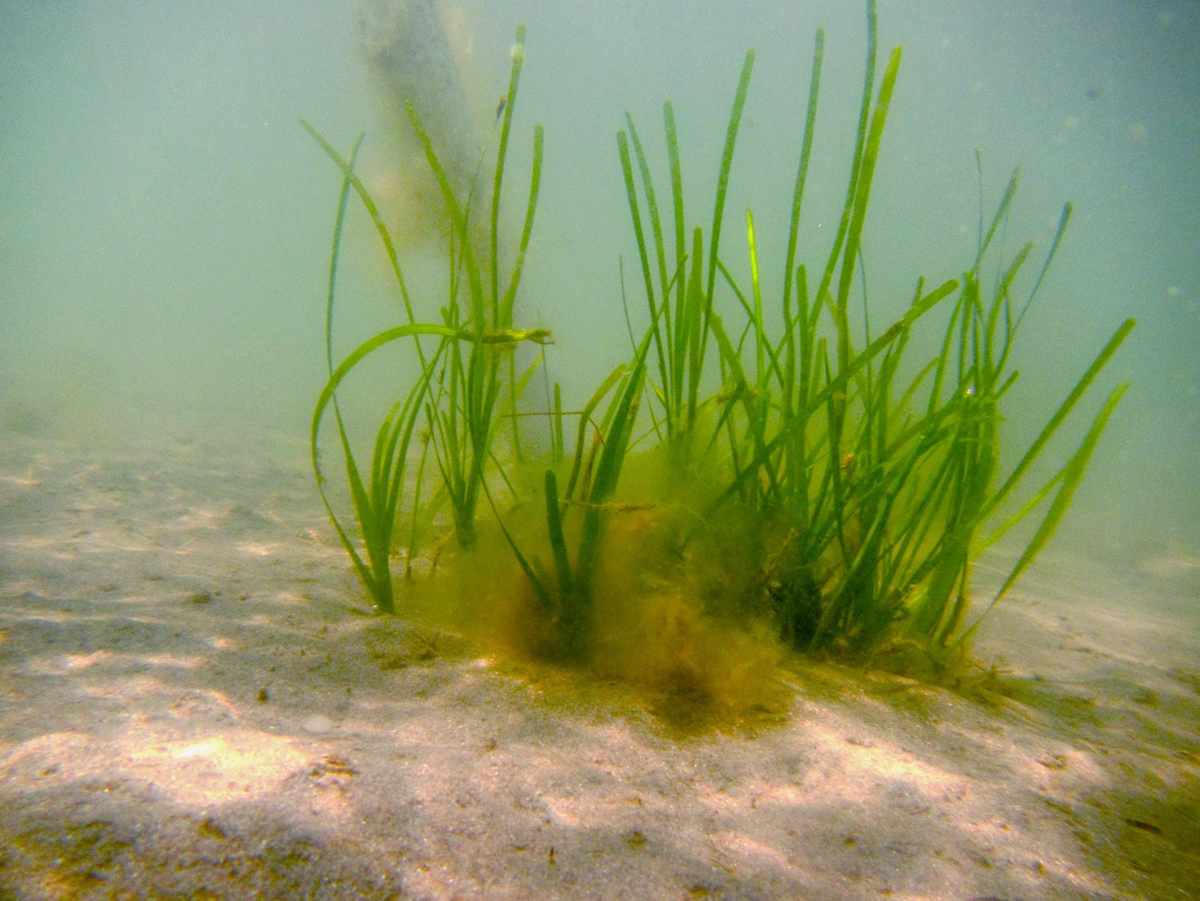
Submerged aquatic vegetation, which scientists call SAV and most of us know as seagrass, is critical to the health of aquatic ecosystems. Not only does it provide habitat for fish and other species, but it prevents erosion and sequesters carbon.
Seagrass has also been shown to be an economically significant part of the environment. Even losing 5% of the state’s seagrass beds could cost North Carolina millions of dollars over the next 10 years.
Supporter Spotlight
Seagrass beds across the world are experiencing declines, and North Carolina’s are not immune to the threat. North Carolina has some of the most expansive seagrass meadows on the East Coast, with about 100,000 acres of growth. A report from the Albemarle-Pamlico National Estuary Partnership, or APNEP, revealed last year that between 2006 and 2013, seagrass beds in the Albemarle-Pamlico Estuary had decreased by 5.6%, a total of 5,686 acres. These findings could indicate that water quality in the estuaries is poorer than in previous years.
Seagrass is important environmentally and economically, but it depends on healthy waters to thrive and it is particularly sensitive to diminished water quality.
New research shows that the state’s current standards for water quality relative to chlorophyll-a and turbidity are insufficient in protecting seagrass in high-salinity environments.
Dr. Nathan Hall of the University of North Carolina Institute of Marine Sciences led the project on behalf of APNEP, looking specifically at how high turbidity and chlorophyll-a levels could reach before inhibiting the photosynthesis process for seagrass, and then, examining how those thresholds compare with the state’s water quality standards.
“If we look at the huge body of research that was done to establish what light levels the grasses need, and then we look at the current light levels that the grasses have in North Carolina waters, we’re either right on the edge of what they need, in most cases, or we’re already at the point where they don’t have what they need,” Hall said.
Supporter Spotlight
Chlorophyll-a is the green pigment in a plant, which is responsible for light absorption to supply energy for photosynthesis. In this study, it is an indicator of how much algae are in the water. The state’s current chlorophyll-a limit for slow-moving bodies of water is 40 micrograms per liter. At this concentration, the water is likely visibly green.
Turbidity evaluates how much nonalgal particulate is in the water. This may be mineral sediment or detritus. This is material that might be kicked up by disturbances like storms, erosion or development.
The reason these two factors pose a threat to seagrass is because SAV needs access to sunlight to photosynthesize. Growing underwater, this means that water must be clear enough for sunlight to make it through to the seagrass beds. Seagrass can handle some time with restricted sunlight availability, but continual deprivation will cause it to die off.
Both turbidity and algae affect the clarity of the water, and that’s why it is important for seagrass — and by extension, the entire estuarine ecosystem — that those things stay at manageable levels for photosynthesis to take place.
To investigate this issue, Hall used a previously established bio-optical model, an equation to help determine the water quality thresholds that allow seagrass enough light to photosynthesize. The bio-optical model was originally calibrated for the North River, which is high in salinity but not strongly linked to the rest of the Albemarle-Pamlico Estuarine System. Before the model could be used across the study area, it needed to be evaluated to see if it would work in different types of waters. Hall found that the model was not compatible with low-salinity waters.
But the model showed that in high-salinity waters, by the time that water quality was poor enough to put a body of water on the state list of imperiled waters, the federal Clean Water Act Section 303(d) list, seagrass would already be existing in a threatening environment where it is not getting enough sunlight to survive.
This information could be useful for the North Carolina Department of Environmental Quality and other managers as they consider how to adjust water quality standards or their evaluation to better protect seagrass.
An upcoming priority is to recalibrate the model to make it accurate for low-salinity waters as well. One of the biggest needs to address is a data gap — to accurately monitor water quality and seagrass, more extensive sampling must take place.
“A lot of areas where seagrass beds exist, we don’t have routine monitoring of water quality,” Hall said.







